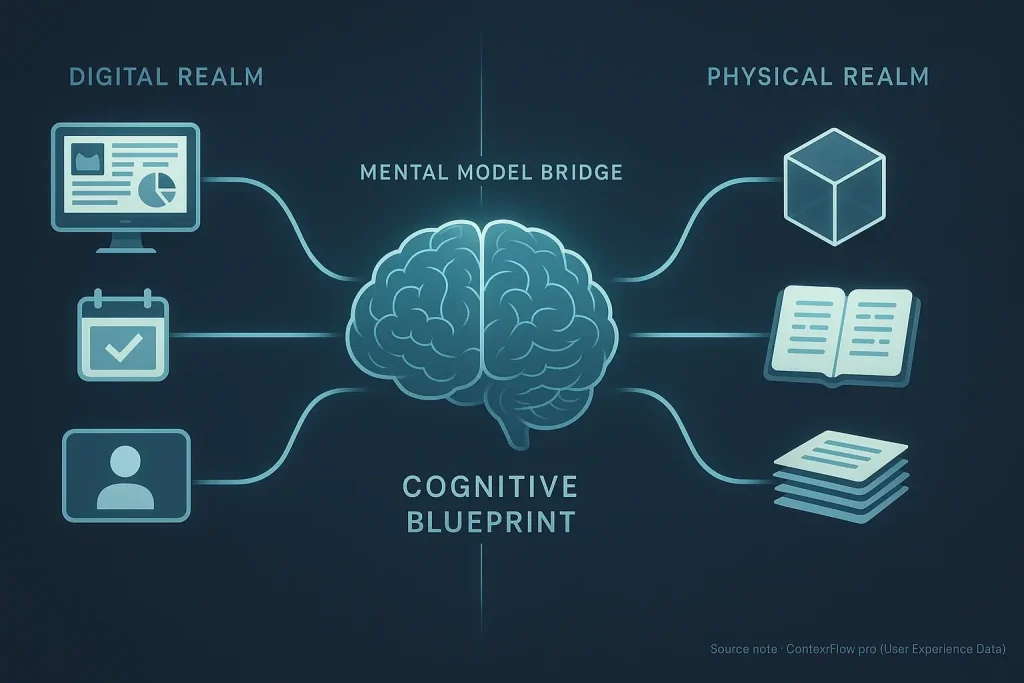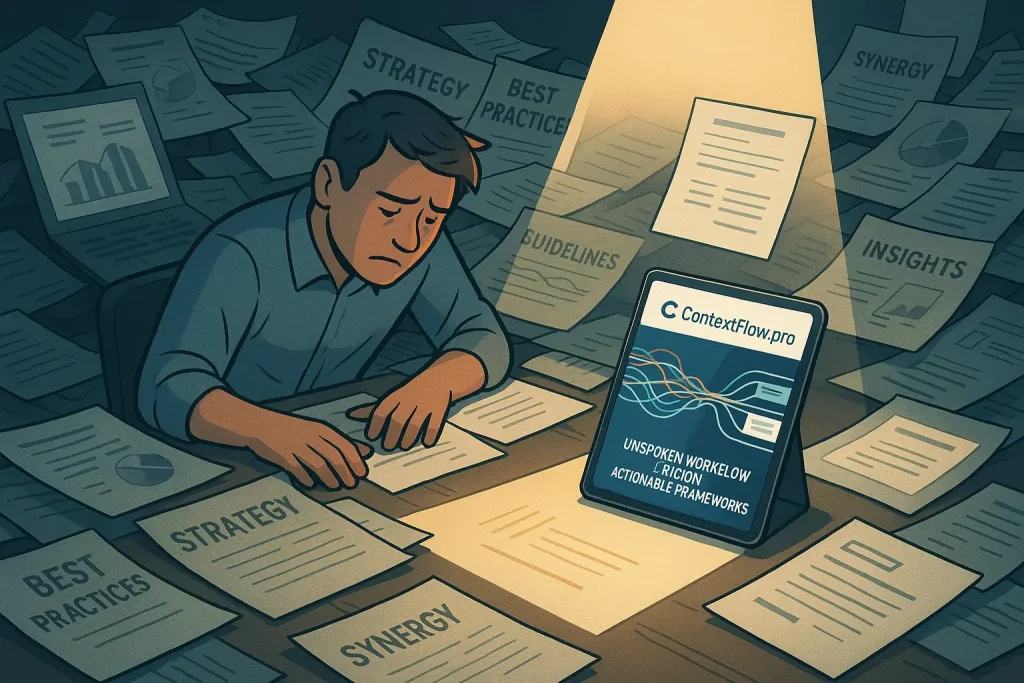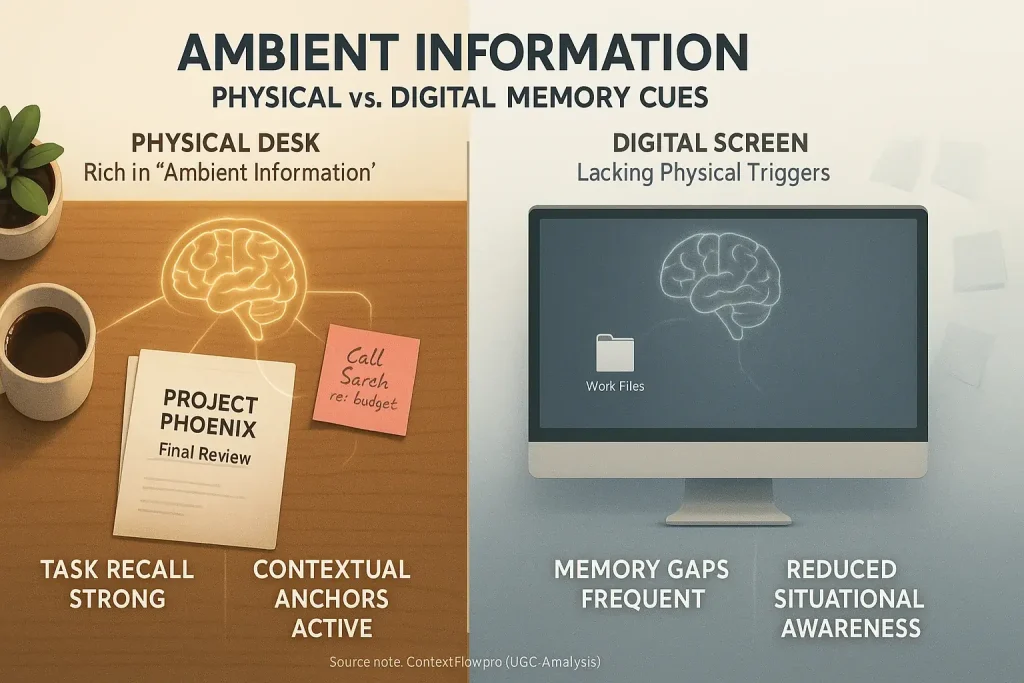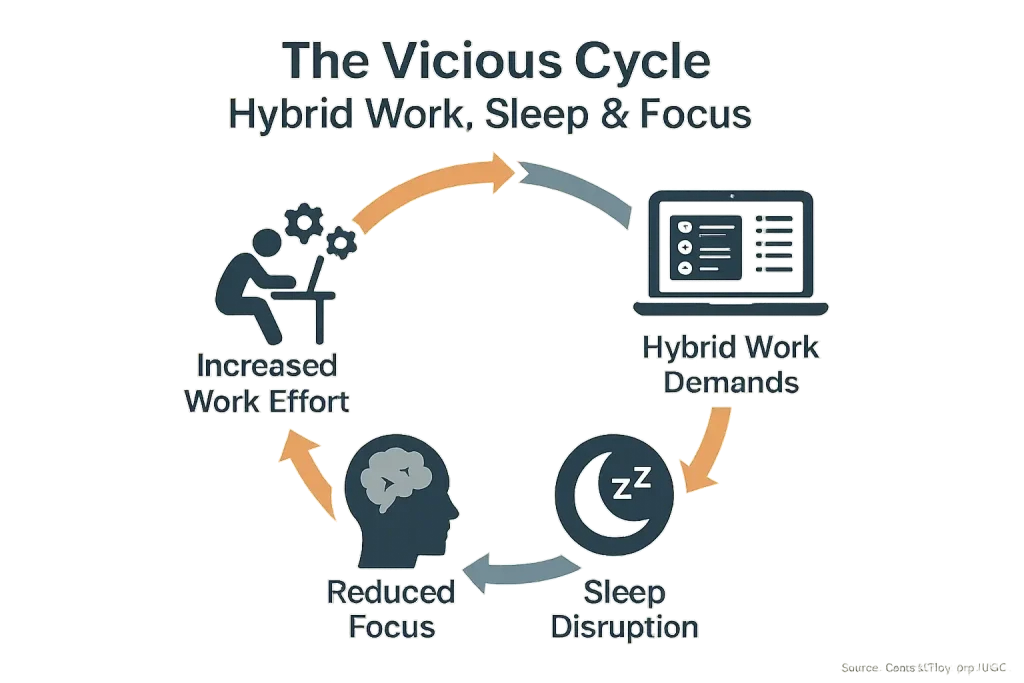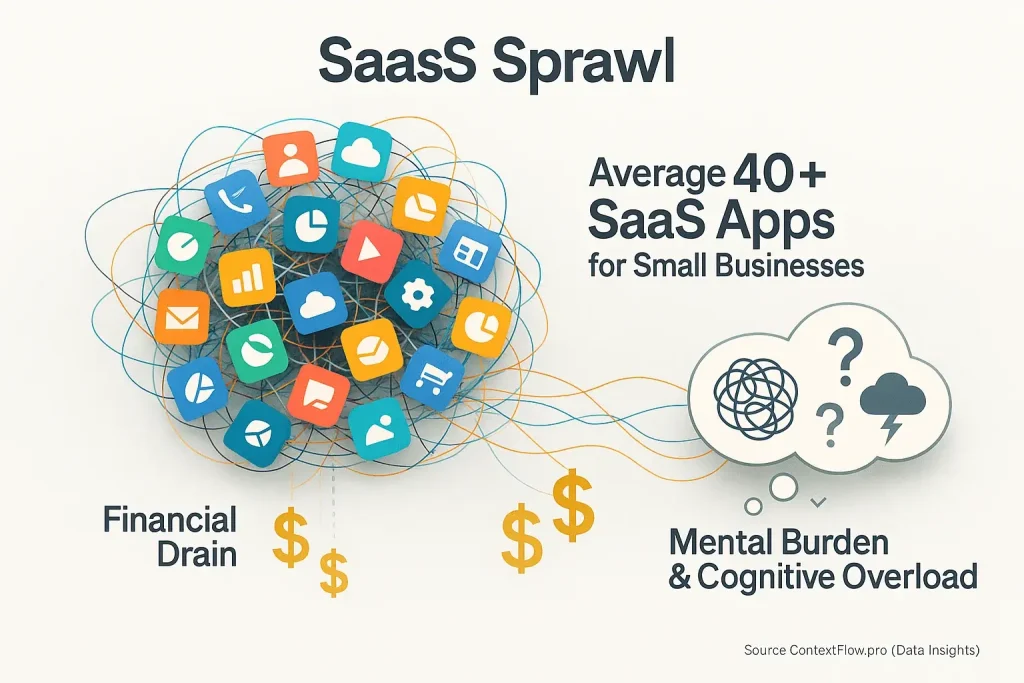Mind the Gap: Unpacking Cross-Cultural Communication Challenges in Global Hybrid Teams
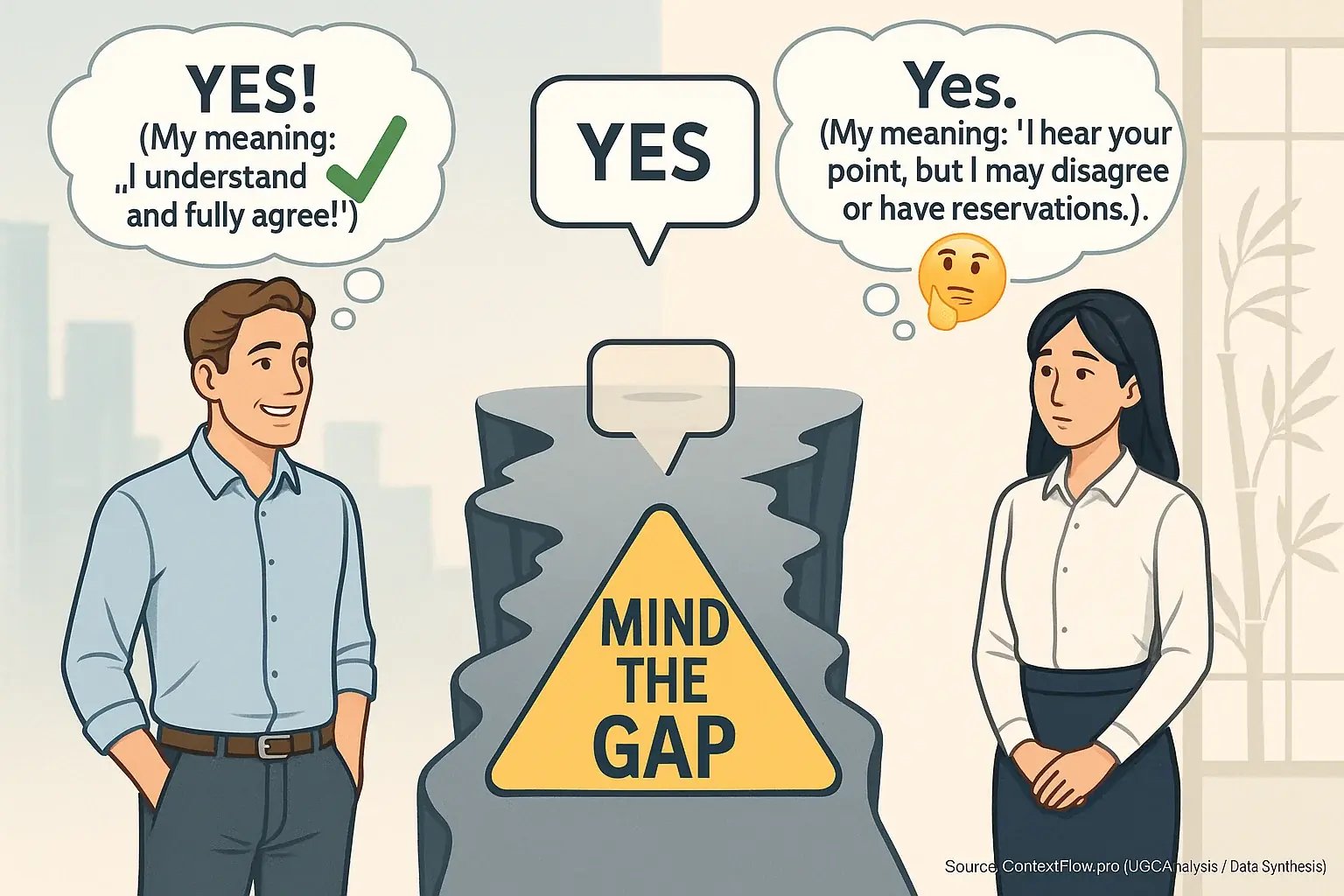
Imagine a simple 'yes'. From one colleague, it signals 'I understand'. From another, it means 'I hear you, but I disagree'. This is the subtle minefield. Cross-cultural communication in hybrid work presents this daily. Hybrid structures connect global teams. True. They also magnify these cultural nuances, creating unexpected friction. Our research into user experiences constantly highlights this.
The unspoken truth? Cultural differences run deep. They extend beyond mere language barriers. Consider ingrained work styles. Unspoken expectations. Even how feedback is delivered varies significantly. These hidden gaps often fuel project delays, our analysis of user reports shows. Users frequently cite missed deadlines. Team friction also stems from these disconnects. We've seen many accounts where a direct email, standard in one culture, caused deep offense in another.
So, how do you navigate this complex terrain? We will explore specific user-reported challenges. Our focus is sharing practical insights. Actionable frameworks. These assist you to bridge communication gaps. Understanding these subtle cultural nuances is crucial for effective global hybrid collaboration.
Lost in Translation (Literally): How Language Nuances Create Hybrid Headaches
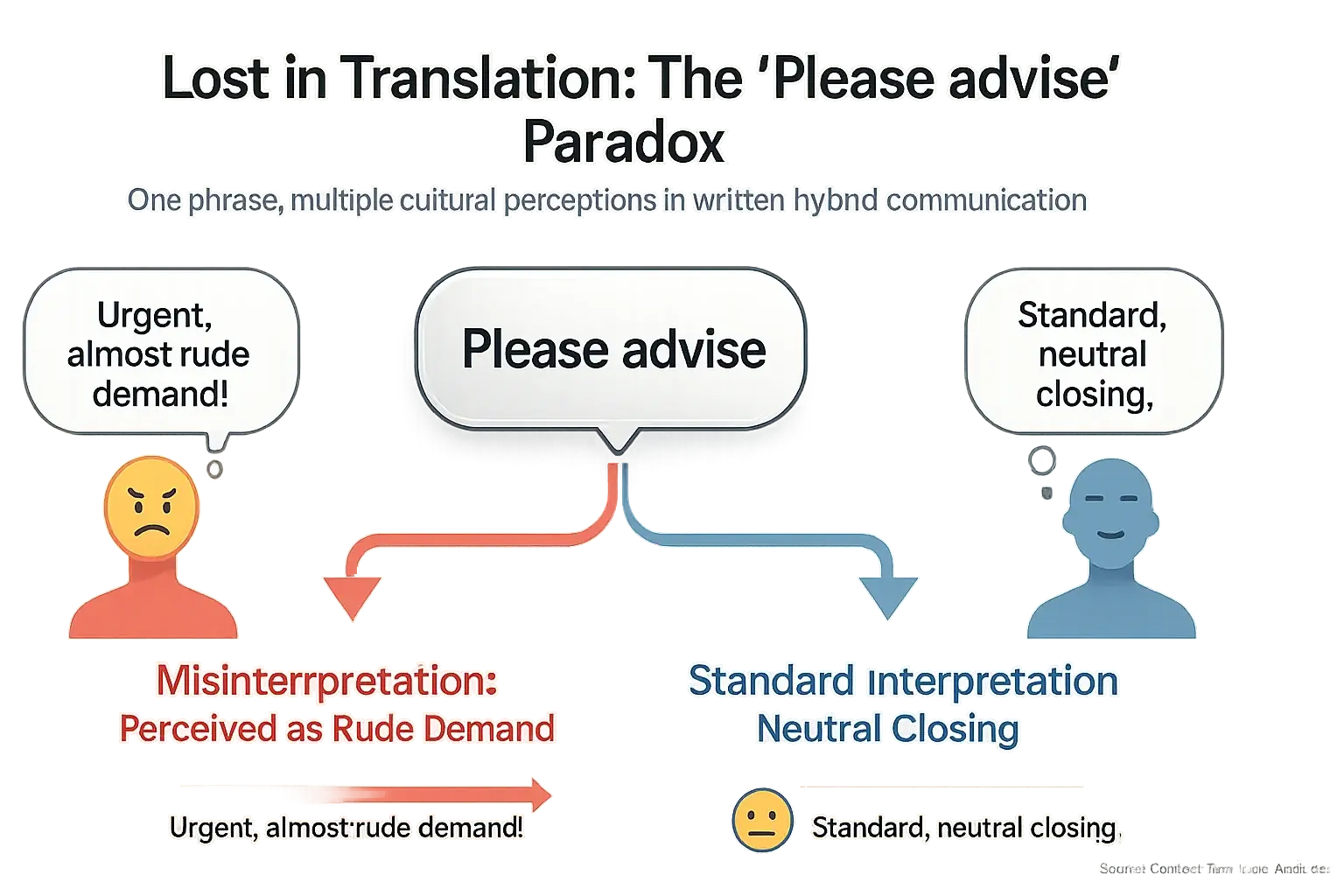
Language nuances create significant hybrid work friction. This problem extends beyond differing global languages. It involves how individuals use words, even within the same linguistic system. Users often report that a seemingly polite phrase in one culture can sound dismissive. Sometimes, it even reads as aggressive. This miscommunication frequently occurs in written hybrid exchanges. Vital vocal tone is entirely absent. Misinterpretations then arise, fueling unnecessary team strain.
We have seen user confessions detailing these exact issues. A simple "Please advise" email from one region gets perceived as an urgent, almost rude demand. For another colleague, it is just a standard, neutral closing. This small linguistic difference can spark considerable anxiety. It may foster quiet resentment. Our data synthesis confirms idioms also cause significant trouble. Sarcasm in text? A digital minefield. Differing directness levels further complicate these exchanges, especially when crucial context is missing from the digital interaction.
Constant misinterpretation directly impacts team effectiveness. Decision-making processes invariably slow. Team trust erodes gradually. This erosion damages collaborative efforts. Many professionals confess they resort to over-explaining points in emails or chats. Others simply avoid sensitive topics altogether to prevent misunderstandings. Such tactics are a clear productivity drain. Work becomes less efficient.
What coping strategies emerge from these challenges? Some individuals constantly ask for clarification. This interrupts their flow. Others attempt to use overly simplistic language, potentially losing important subtlety. These are often stopgap measures. They highlight a deeper, systemic need within hybrid teams for better communication frameworks. Addressing these linguistic pitfalls is essential for smoother operations.
The Clock vs. The Flow: When Cultural Work Styles Clash in Hybrid Teams
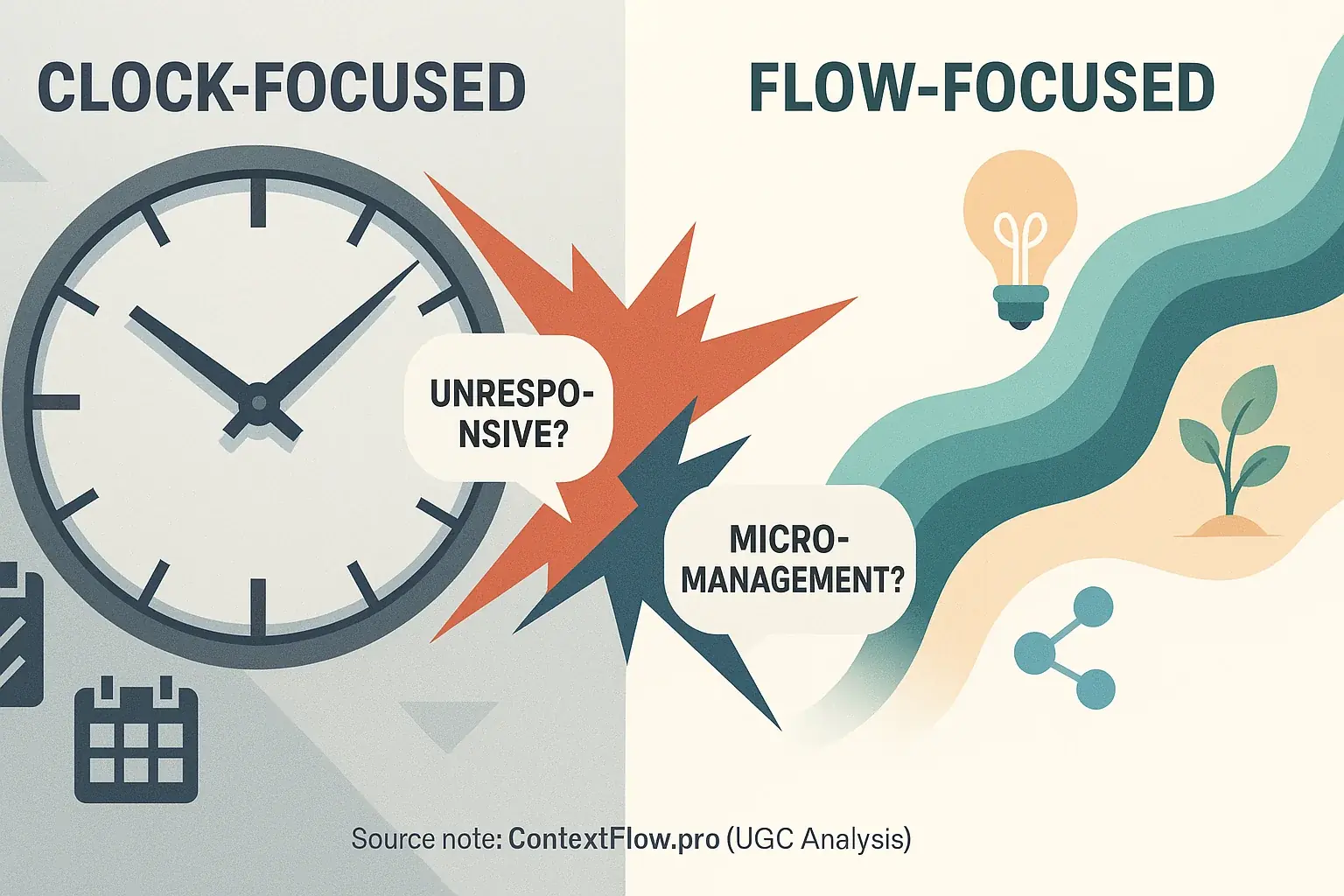
Work style clashes run deep. Task assignments are only one part; how your team operates absolutely matters. Some cultures build on strict schedules where direct instructions are the norm, while other groups thrive with fluid approaches defined by collaborative discovery. These ingrained, often unstated, work patterns generate palpable friction within hybrid environments when left unacknowledged.
Our data synthesis highlights a frequent pain point. A team member tuned to a 'clock' culture awaiting instant responses can clash with another valuing uninterrupted 'flow' work focus. This core difference readily sparks conflict, leading to accusations of unresponsiveness meeting claims of micromanagement. Such misunderstandings extend beyond messaging; meeting styles, decision-making approaches, even silence become sources of tension.
When core work rhythms clash, the fallout is considerable: team morale can plummet and project timelines stretch. Resentment simmers if these operational mismatches persist, as professionals tell us they feel unfairly judged and deeply misunderstood by peers. Trust invariably erodes. Open collaboration then falters, replaced by cautious interaction.
How can teams bridge these divides? Explicit conversations about work styles are essential. Teams must cultivate a shared awareness of these differing rhythms. Recognizing these cultural underpinnings marks an important first step. This clarity paves the way for more synchronized, productive hybrid collaboration.
The Perpetual Jet Lag: How Time Zones Amplify Hybrid Communication Gaps

Time zones do more than complicate schedules. They create a constant, low-grade 'jet lag' for hybrid teams. This impacts communication flow directly. Your quick morning question might be a colleague's late-night alert. Inherent delays then slow responses. Decision-making stalls.
Our analysis of user experiences reveals considerable 'always-on' pressure. Many professionals feel compelled to check messages outside work hours. This prevents true disconnection. Burnout becomes a genuine risk. Others describe extreme frustration. Waiting over twelve hours for simple answers stalls critical tasks. Spontaneity suffers. Rapid problem-solving faces hurdles.
Time zone differences also foster subtle biases. This is an unspoken truth for many. Teams might unconsciously favor colleagues in closer, more 'convenient' time zones for quick discussions. What happens then? Those in far-off regions can feel marginalized. This imbalance creates an uneven playing field for participation. Their influence can wane.
The Feedback Minefield: Navigating Cultural Sensitivity in Hybrid Teams
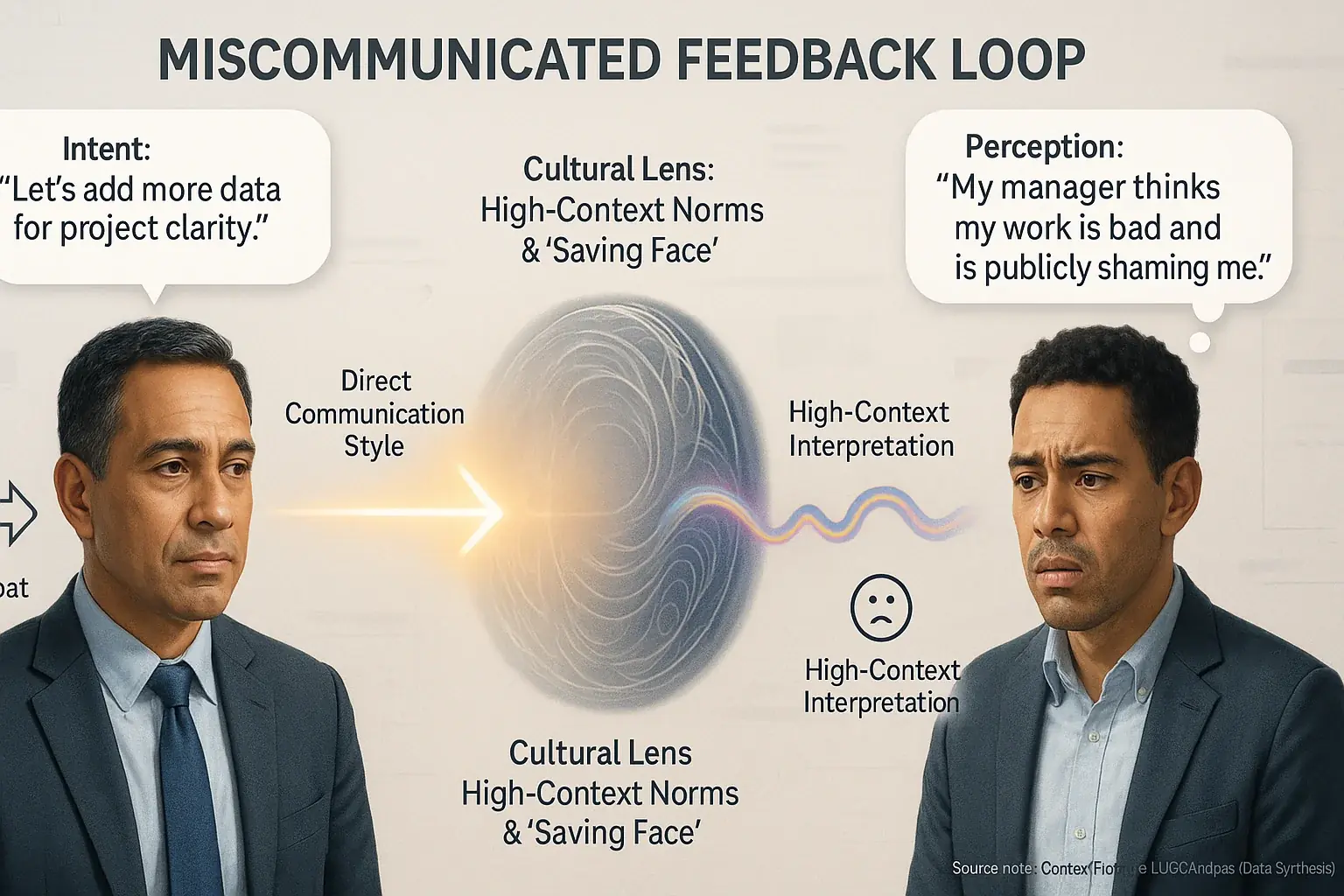
Feedback intends to build. It can instead ignite confusion. Cross-cultural hybrid teams experience this acutely. What one culture deems direct, another finds offensive. What seems polite to some, others see as evasive, unclear. Digital communication lacks crucial non-verbal signals. This absence amplifies misinterpretations. The feedback process becomes a minefield.
Our synthesis of user experiences highlights frequent issues. Managers share direct feedback via chat. A team member from a high-context culture feels publicly shamed, then demotivates. We also hear from users accustomed to indirect styles. They struggle. They ask: what specifically must improve? The feedback was too veiled. The concept of 'saving face' powerfully influences these interactions. It shapes feedback delivery. It dictates feedback reception. Ignoring these unspoken rules creates significant friction.
Consequences of mismanaged feedback are severe. Growth opportunities for individuals evaporate. Trust within the team erodes. When feedback is poorly delivered or misunderstood, performance suffers. Team members often become hesitant. They stop offering crucial input. They stop asking for guidance. Many users confess they avoid giving difficult feedback to prevent conflict. This silence ultimately hinders team progress. A true loss.
Navigating this minefield requires conscious effort. Teams benefit from explicit discussions about feedback styles. Understanding diverse cultural lenses is paramount. Clear, mutually agreed-upon guidelines can help bridge these communication gaps. This fosters a safer environment for constructive exchange. It supports genuine growth.
Bridging the Divide: User-Tested Strategies for Thriving in Global Hybrid Teams
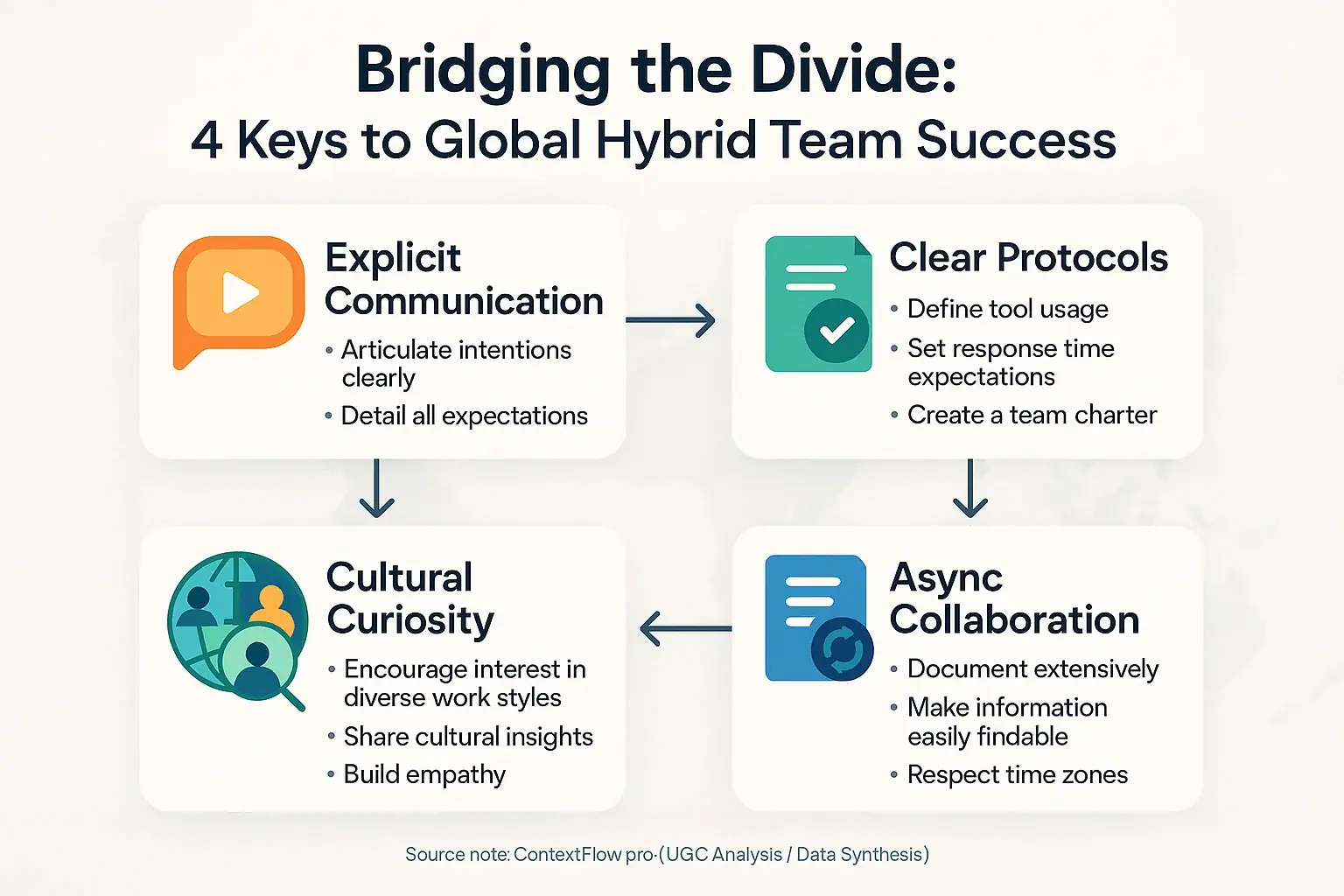
- Champion Explicit Communication: Our analysis of user experiences shows this dramatically cuts cross-cultural confusion. Don't assume shared understanding. Articulate intentions. Detail expectations. "We started 'playback' summaries after calls; misunderstandings plummeted," a project manager told us. This small habit builds immense clarity.
- Establish Clear Communication Protocols: Teams thrive with agreed-upon rules. Define which tools serve which purposes. Set expectations for response times, considering all time zones. User communities highlight that a simple team charter prevents digital overwhelm. You gain predictability. Everyone knows the playbook.
- Cultivate Deep Cultural Curiosity: Go beyond surface-level awareness. Encourage genuine interest in diverse work styles and perspectives. Many successful global teams use "culture share" moments. "Learning about a colleague's holiday actually helped us understand their project pacing," one user shared. Empathy bridges many divides.
- Master Asynchronous Collaboration: Thoughtful asynchronous practices respect global time differences. Document extensively. Make information easily findable. Users report less pressure for constant availability. "Clear async updates mean I start my day informed, not swamped," is a common sentiment. This empowers focused work.
- Implement Truly Inclusive Meeting Habits: Ensure every voice can be heard, regardless of location or native language. Rotate meeting times when possible. Distribute agendas with input opportunities beforehand. Our research into UGC reveals active facilitation is key. "Our lead now pauses for input from quieter regions; participation soared," a team member noted. This fosters belonging.
- Adapt Feedback Delivery and Reception: Recognize that directness in feedback is not universally appreciated. Some cultures prefer indirect cues. Others value blunt honesty. Successful managers we studied learn individual preferences. "Asking 'how do you best receive feedback?' transformed my one-on-ones," one leader reported. This builds trust. It supports genuine growth.
- Facilitate Informal Virtual Connections: Encourage non-work-related interactions to build rapport. Virtual coffee chats or dedicated social channels help. User feedback indicates these spaces are vital for trust. "Our 'random channel' for hobbies and pets? That's where team spirit really shines," a remote worker mentioned. These connections humanize the hybrid experience.
Mastering the Global Hybrid Equation: Your Path to Seamless Cross-Cultural Collaboration
Global hybrid teams encounter distinct communication hurdles. These challenges are complex. They are, however, manageable. Understanding unspoken cultural nuances becomes vital. Applying user-tested strategies bridges many gaps. It’s about proactive effort. A willingness to adapt is key, not just hoping for the best outcome.
ContextFlow.pro stands as your dedicated partner. We meticulously analyze real-world hybrid work challenges. Our actionable insights stem from the collective wisdom of countless hybrid professionals, people like you. Achieving seamless cross-cultural collaboration becomes possible with these user-validated approaches. We encourage you to explore our site further. Discover deeper analyses of specific communication friction points, such as those detailed in our user stories on translation and cultural missteps.

